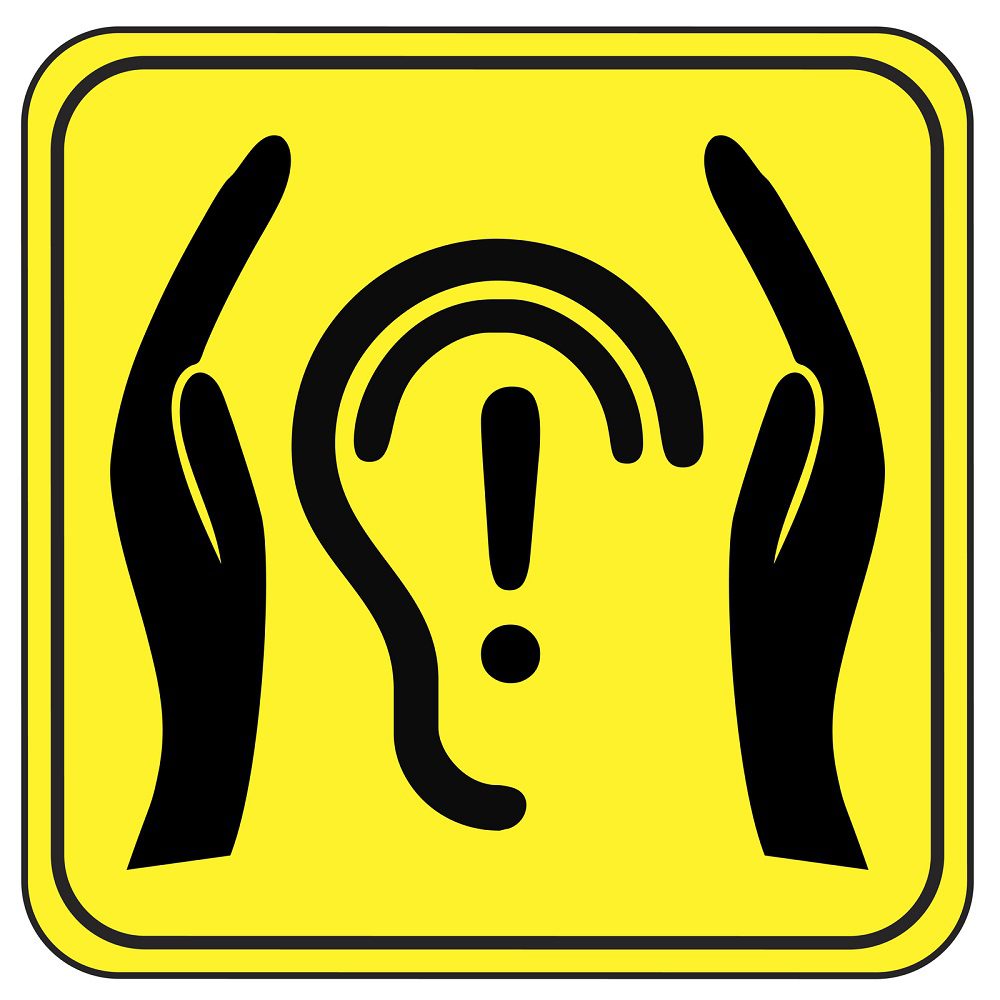Staying Vigilant: Identifying and Mitigating Workplace Hazards in Australia
Working in an office can seem like a calm oasis of productivity, but it’s often more like an iceberg – hiding unseen dangers below the surface. In Australia, workplace hazards lurk around every corner, and if employers don’t take the necessary steps to protect their staff, tragedy could be lurking just over the horizon.
It’s no secret that Australian workers face many hidden risks at work daily – from slips and trips to hazardous chemicals and extreme temperatures. That’s why uncovering the top workplace hazards is so important for both employees and employers alike: knowledge really is power when it comes to staying safe on the job!
By taking a closer look at these hidden dangers, we can all make sure our place of business offers its employees a safe environment where they feel valued and respected. By understanding what needs to be done now, we can create workplaces that are healthier today while setting up better protections for tomorrow.
Defining Workplace Hazards
As a society, we are highly conscious of workplace safety. We understand the importance of hazard identification and prevention in ensuring employees remain safe at work. However, there is still much to be done to uncover hidden dangers that lurk within our workplaces.
In Australia, these hazards can range from physical risks such as manual handling injuries or slips/trips/falls; to psychological harm like stress or bullying. Employers must undertake a thorough hazard assessment and develop strategies for effective hazard prevention.
Workplace safety is about protecting individuals from harm and providing an environment where productivity and well-being can flourish.
Creating an open dialogue between management and employees will help encourage transparency around potential risks while increasing engagement with safety initiatives. Establishing clear policies that outline risk management processes will ensure everyone understands their role in creating a safe working environment.
In order to protect workers and promote healthy practices, businesses must stay up-to-date with relevant legislation designed to keep people safe at work; they should also consider any additional measures they could take beyond legal requirements that would minimise potential risks further.
By understanding what constitutes ‘hidden danger’ in the workplace – and taking steps to prevent them – we can all play our part in making sure Australian worksites are secure spaces for everyone involved.
Top 10 Workplace Hazards In Australia
- Slips, trips, and falls
- Manual handling and lifting injuries
- Machinery and equipment hazards
- Electrical hazards
- Working at heights
- Hazardous substances and chemicals
- Noise exposure and hearing loss
- Working in confined spaces
- Fatigue and stress-related health issues
- Workplace bullying and violence
Chemical Exposure Risks
It’s no secret that chemical exposure is a major workplace hazard in Australia, but do we really understand the full extent of the risk? While it’s true that many industries rely on hazardous materials to operate safely, inadequate safety measures can lead to workers being exposed to dangerous compounds and toxins. In fact, according to Safe Work Australia, more than 50% of work-related fatalities are due to exposure to toxic substances.
So how can employers ensure their staff remain safe from chemical hazards? Here are five key steps for minimising risks:
- Educate workers about potential dangers – Make sure everyone understands what chemicals they may be exposed to and the associated health risks. Provide clear instructions for handling these substances safely.
- Assess safety equipment – Ensure adequate PPE (Personal Protective Equipment) is available or required when necessary. Regularly inspect respirators and other protective gear for signs of wear/tear or damage.
- Monitor air quality – Install sensors and monitors around workspaces where airborne contaminants could be present; this will alert employees if levels become too high so action can be taken quickly.
- Keep records up-to-date – Develop an inventory system outlining storage locations and all relevant health information, including disposal requirements and any precautions needed when using specific chemicals.
- Follow regulations – Adhere strictly to government standards, such as WHS legislation regarding worker rights and responsibilities concerning occupational health issues; undertake regular reviews of your business’ procedures against these standards.
By implementing effective strategies like these, businesses can reduce the chances of exposing their workforce to potentially harmful substances in the workplace – thus keeping them safe from hidden dangers lurking within our working environments.
Electrical Accidents
Unfortunately, chemical exposure is not the only risk that workers face in their daily lives. Electrical accidents are also a major cause of workplace injuries and deaths – with electrocution being one of the most serious hazards. It’s estimated that more than 100 people die each year from electrical shock or related incidents in Australia alone.
To help mitigate these risks, employers should make sure all staff receive adequate training on how to handle electricity at work safely – this includes proper use of equipment such as power tools, extension cords and other electrically powered items. Here are five key steps for preventing electrical accidents:
- Ensure safety protocols are adhered to – Make sure employees never touch live wires or exposed connectors; they must be trained to follow specific procedures when dealing with potentially hazardous situations.
- Provide appropriate PPE (Personal Protective Equipment) – Wear gloves and eye protection whenever working around electrical sources; protective clothing may also be necessary, depending on the job role.
- Carry out regular checks – Check leads, plugs and sockets for signs of damage before use; regularly inspect wiring throughout workspaces too. If any faults are detected, get them fixed immediately by an electrician qualified to do so.
- Don’t overload circuits – Overloading circuits can increase the chance of an accident occurring, particularly if cables become hot due to overuse. Keep track of current draw levels and don’t exceed maximum load ratings specified by manufacturers/suppliers.
- Investigate near-misses promptly – When something goes wrong but no injury occurs, it’s important to investigate quickly in order to identify potential causes and take corrective action where needed; documenting findings will also help improve future safety processes within your business environment.
No matter what industry you’re in, taking the time to implement effective safety strategies is essential for protecting your workforce from electrical accidents in the workplace. By staying aware of potential dangers associated with electricity and following recommended guidelines, businesses can prevent unnecessary harm from coming to those who rely on their services daily.
 Slips, Trips And Falls
Slips, Trips And Falls
When it comes to workplace hazards, slips, trips, and falls remain a major source of injury for many Australians. Whether due to wet floors, uneven surfaces or inadequate footwear, the consequences can be severe – with sprains, strains and broken bones being just some of the common results.
To reduce these risks, employers should ensure their workers have access to appropriate flooring (such as non-slip mats) in areas where liquids are used; this will help minimise slip hazards while also providing better footing when moving around.
Additionally, employees must wear suitable shoes that offer adequate grip – always check the manufacturer’s specifications before allowing staff to use any particular item of footwear onsite.
Finally, regular inspections should be carried out across workspaces in order to detect potential trip hazards such as loose cables or objects left lying around; if anything is discovered during these checks, then take immediate corrective action. It’s important to remember that even small steps can make big differences when it comes to protecting your team from harm.
TIP: Employers should also consider using visual cues such as warning signs at points where there is an increased risk of slips/trips/falls; these alerts could include symbols like ‘Caution Wet Floor’ / ‘Watch Your Step’ etc., which will remind people to stay alert and exercise extra caution in potentially dangerous situations.
Ergonomic Injuries
With the rise of sedentary lifestyles and technology-driven workplaces, ergonomic injuries are becoming a major concern for many Australians. These musculoskeletal disorders (MSDs) occur when workers are required to perform repetitive tasks or use awkward postures while operating machinery or equipment – leading to problems such as back pain, hand/wrist strain and headaches.
In order to reduce these risks, employers should ensure that employees have access to adjustable workstations with appropriate chairs, keyboards etc., which will help them maintain an optimal working position throughout the day.
Furthermore, it’s important to provide regular breaks during long periods of intensive activity; this gives people time to rest their bodies and avoid developing any unnecessary tension in their muscles/joints.
Finally, employers must also consider using workplace assessments in order to identify existing hazards before they cause harm. An experienced occupational therapist can evaluate the physical demands of jobs and recommend ways to improve safety – thus reducing the chances of employees suffering from MSDs later on down the line.
Stress And Mental Health Issues
Interestingly, the same workplace conditions that can lead to physical injury can also contribute to mental health risks. Workplace stress is a major issue in Australia; factors such as tight deadlines, lack of control over work-life balance and unclear job roles all impact employees’ well-being.
Job-related stress has been linked to anxiety disorders, depression, sleep disturbances and other psychological issues – making it necessary for employers to take action against these dangers.
Fortunately, there are several ways organisations can tackle this problem. Employers should provide adequate resources and support systems so that workers feel empowered rather than overwhelmed by their jobs; they should also encourage open conversations about job-related stress among staff members while offering access to counselling services if needed.
Finally, educating employees on aspects like mindfulness techniques or time management tips could help them develop strategies to manage any workplace mental health challenges more effectively.
Encouraging people to communicate openly about their issues is key here; when everyone feels safe enough to talk about their struggles without fear of judgement or punishment, workplaces become happier places – ultimately benefiting both individuals and businesses alike!
We offer these courses in local workplace environments as well as through digital streaming services in Capital cities and also rural locations in between.
Frequently Asked Questions
What Is The Most Common Type Of Workplace Hazard In Australia?
We all want to feel safe at work. So it is important to understand what the most common types of workplace hazards are in Australia. By understanding this, we can protect ourselves and our colleagues from injury or illness while on the job.
Australian workplace safety is an issue that should not be taken lightly. These days, many industries have a wide range of hazards – including physical, chemical and mental health risks – which put workers’ well-being at risk. In order to ensure everyone is kept safe, it is essential to identify these potential risks before they become serious problems.
So what is the most common type of workplace hazard in Australia? Studies suggest that slips, trips and falls account for around one-third of all injuries sustained by Australians in their jobs each year.
This includes slipping on wet floors due to spills or poor housekeeping practices, tripping over loose cords or cables left lying around workplaces, and falling off ladders or chairs when working at heights. As such, employers should pay close attention to any potential trip hazards present within their worksite and take steps to minimise them wherever possible.
Employers also need to consider other elements of job safety in Australia, such as manual handling tasks (e.g., lifting heavy objects) or environmental exposures (e.g., dust particles). It is, therefore, vital that businesses carry out comprehensive risk assessments regularly in order to identify any existing dangers so they can be eliminated or controlled effectively.
How Can I Reduce The Risk Of Workplace Accidents?
Preventing workplace accidents isn’t just important. It’s essential. Practising proactive safety protocols and implementing preventative measures can be the difference between a safe work environment and an unsafe one. As employers strive to reduce risks in the workplace, understanding how to mitigate danger is paramount.
Regarding accident prevention, several steps can help minimize risk and improve overall workplace safety. First, companies should ensure they have comprehensive safety policies in place covering all aspects of their operations.
This should include regular inspections for potential hazards as well as training employees on the proper use of the equipment and other safety-related topics. Companies should also consider investing in up-to-date technology, such as automated systems or sensors that alert workers when hazardous conditions exist.
Finally, it’s crucial for everyone involved to follow established procedures to avoid any mishaps or injuries from occurring.
Safety doesn’t have to require complex strategies or expensive investments; often, small changes can make a big difference. For instance, encouraging open dialogue among staff about potential risks can help identify areas where problems may arise before they become serious issues.
Additionally, providing clear instructions regarding tasks and expectations helps ensure everyone knows what needs to be done correctly and safely every day at work – this goes hand-in-hand with fostering a culture of respect within the organization, which will encourage employees to look out for each other’s well-being while on duty.
Taking these simple preventive measures won’t just create a more secure atmosphere but reinforce a sense of belonging amongst your team too!
Ensuring people feel comfortable discussing possible dangers decreases the likelihood of injury and strengthens business relationships by creating trust between employers and their teams – something we could all benefit from! To sum up, investing in accident prevention practices is key if you want your company to remain safe in the future.
What Are The Long-Term Effects Of Chemical Exposure In The Workplace?
What are the long-term effects of chemical exposure in the workplace? This is an important question to consider, as many workplaces can be rife with potential dangers. Exposure to chemicals over a long period of time can have serious consequences for your health and well-being.
Respiratory illnesses, chemical poisoning and other chronic illnesses are all risks associated with continuous contact with hazardous substances. Chemical exposure poses a greater risk than short-term contact because it takes longer for any damage or adverse reactions to become apparent.
It’s not just immediate workers who need to be aware of these risks either; those living near factories that produce hazardous materials may also suffer from extended periods of chemical exposure without even knowing it.
It’s worth noting that some of these conditions often take years to develop, so you won’t immediately know if you have been exposed to dangerous levels of toxic materials until much later down the line.
That’s why it’s essential to understand what safeguards are in place at your workplace and take steps to protect yourself against possible long-term damage from chemical exposure.
Taking such precautions can help make sure that you don’t face any unwelcome surprises when it comes to your health down the road – allowing you to stay safe and make sure everyone else around you stays healthy too!
What Types Of Ergonomic Injuries Are Most Common?
Ergonomic injuries are so incredibly common in the workplace. It’s almost like they’re lurking around every corner! From musculoskeletal disorders to repetitive strain injuries and even work-related stress, these potentially life-altering conditions can be found just about anywhere.
They might not always be visible, but that doesn’t mean they aren’t there—in fact, it could be argued that ergonomic injuries pose one of the most profound hidden dangers at work.
So what types of ergonomic injuries are most likely to occur? Well, you may have heard of carpal tunnel syndrome—which is a type of nerve compression caused by overuse or prolonged awkward positioning of the wrist and hands. Musculoskeletal disorders (MSDs), such as back pain and shoulder and neck issues, can also develop due to poor posture or incorrect lifting techniques.
Repetitive strain injuries (RSIs) are another form of MSD which often arise from repeating certain physical tasks too frequently without taking adequate rest periods. And finally, we’ve got work-related stress: an insidious yet totally real condition that has sadly become increasingly prevalent in today’s high-pressure working world.
It pays to stay vigilant when it comes to potential risks associated with our jobs—and be aware of how hazardous ergonomic injuries can make sense.
The consequences range from mild discomfort right through to disability or death—so if any signs start appearing, it’s important to get them checked out immediately before things take a turn for the worse. After all, no job should ever cost us our health!
How Can Employers Reduce The Risk Of Stress And Mental Health Issues In The Workplace?
Stress and mental health issues in the workplace can be a serious concern for employers. It’s important to consider how stress management and mental health risk can be addressed, as it has an impact on both individual well-being and workplace productivity.
When considering ways to reduce the likelihood of stress and mental health issues in the workplace, there are several measures that employers can take. For example, providing employees with access to resources such as employee assistance programs or online counselling services may help them manage their anxiety levels.
Additionally, encouraging open dialogue between colleagues around topics related to mental health can create a more supportive work environment. Employers should also strive to ensure workloads are reasonable, considering staff members’ personal commitments outside work. This will enable them to focus on their job without feeling overwhelmed or overworked.
Creating a culture of wellness is essential when tackling workplace stress and mental health risk.
By fostering positive relationships among teams, promoting healthy lifestyle habits through activities such as yoga classes or meditation sessions, as well as setting clear expectations regarding working hours, employers can play an integral role in ensuring a healthy work-life balance for their staff.
Ultimately, creating an environment where employees feel supported and valued is key to reducing the risks associated with poor mental health at work.
Conclusion
In conclusion, workplace hazards in Australia can be serious and potentially life-threatening if not managed properly. Approximately 8% of all deaths in the country are attributed to occupational health risks, making it one of Australia’s leading causes of death.
Employers need to take proactive steps to ensure a safe working environment and reduce the risk of accidents or injury to their employees. This includes providing proper training on safety procedures, ensuring that hazardous materials are handled correctly, implementing ergonomic measures to reduce physical strain, and addressing mental health concerns among workers.
By taking these steps, businesses can create an environment where everyone is safe while they do their job.
It’s also essential for employees to remain aware of potential dangers in the workplace and follow instructions regarding safety protocols.
Everyone has a responsibility to look out for themselves and each other when at work – by being mindful of any potential hazards and reporting them immediately, we can help keep workplaces safer for everyone involved. With this knowledge in mind, we can continue striving towards better working conditions across Australia so that our lives aren’t put at risk every day just by going to work.


 Slips, Trips And Falls
Slips, Trips And Falls

















